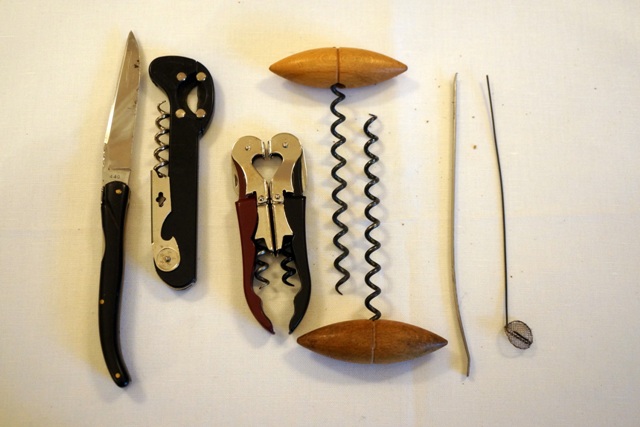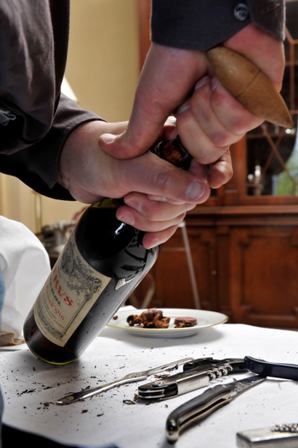Cool pics, thanks for sharing
Great posts. I don’t have many reasons to be in Florida, especially Tampa but should it happen, Berns is certainly on my bucket list.
However
![]() Any obstetricians on the board?
Any obstetricians on the board?
I can’t wait to go there…We have reservations for next Sunday & Monday night. Sounds great
Thank you for the reply. Interesting that the older wines were at such a lower price. A few years ago I tasted a 1870 Clos de Vougeot for free at an auction tasting and it still had a life left and cold have easily been mistaken for a wine decades younger. So taking a gamble on tasting the older wines you did was a wise one. Great report and I wish I was there with you to taste them!
Thank you. Always look forward to your posts.
Merci as always, François
Well done Francois!
Francois, thanks for sharing your notes from your night at Bern’s. I wish I had planned my first visit to Bern’s 6 days later, then I would’ve met you. I was there last Monday night. If I ever get to go to one of your dinners in France, I’m going to bring you a present, a Durand!
I’m sure this comment might have been a bit tongue-in-cheek, but I actually asked Brad at Bern’s why he used his very fancy wine key (perhaps a Laguiole, I forget) rather than a Durand. The gist was that he wouldn’t use one at service, both because he doesn’t find it necessary for most bottles and also that it takes something away from the ritual, but that he doesn’t think there is anything wrong with them.
Bravo and thanks–quite an interesting narrative!
I was being completely serious. I’m not sure a Durand would work on every old cork, but certainly most. I met Brad for a few minutes last week before service, but he had a large party that night and never made it into our room at Bern’s. Our server was 1 for 3 in getting the corks out in 1 piece that night. We had a '64 that crumbled and an '81 that also had to be pushed into the bottle. The '79 we ordered was a 1 piecer, but it was 100% saturated with wine. The wine was still in good shape though, a '79 Hermitage. If I were a server or sommelier there, I’d insist on using a Durand. Laguioles work well on stable corks, but half of Bern’s cellar (maybe) requires a better tool.
I have a Durand. The concept is very interesting and I can understand that it works well in many cases. But for me, it hurts the cork and as I collect corks as a memory, I try to keep them as nice as possible.

This picture shows corks that I have pulled by myself for one meeting of the Academy for Ancient Wines. It shows also my tools. I consider that when I succeed in pulling the cork entirely, the cork is nicer without Durand which hurts the cork.
The idea is very intelligent, but I prefer my method. Probably as I feel the cork largely better because my fingers are in contact with the corkscrew.
Thank you for the information Francois. Your picture makes me smile almost as much as going to Bern’s!
Francois(e) …
Can you please explain what tools you are using to open the old wines ? You seem to be using a single helix ?
thank you
First of all, in French, François is a male and Françoise is a female.
Except if I made a mistake about my own personality, I have always thought that François is more appropriate for me than Françoise. 
Second, the tools.
The pictures of this article will show you my method :
http://www.academiedesvinsanciens.org/method-for-opening-old-bottles-2/
And this picture shows my tools. I have always two helix in order to react if the first draws only a part of the cork

The fact to have the fingers on the helix as shown here :

helps me to “feel” the way the cork comes out and helps me to have no small parts falling in the bottle.
Thank you very much . So you use 2 different cork screws ? First the sommelier cork screw to lift the cork 1 to 3 cm , and then one with a single helix ?
I lift with the normal corkscrew in order that the cork does not stick to the glass (but it happens that it continues to stick).
And I lift only 2 to 4 millimetres, not centimetres.
Francois, what do you use when the waiter’s corkscrew only lifts up the center of the cork, and the rest of the cork sticks to the sides? This has always been my biggest challenge with old corks, the dry cork. Wet corks are easy compared with dry corks, in my opinion. Thanks.
When you lift 3 millimeters, the bottom of the cork will not move.
But then, using the helix, the bottom will follow with no problem except at the end, it could break. It is why the lift with the helix must be made slowly in order that the elasticity of the cork is preserved.
It happens that not all the cork comes, and nearly always what does not come sticks to the glass. With the thin tool used to eat crabs, I can lift the remains gently.
I had a feeling you would go back to Bern’s François, a wonderful place! We worked with Brad as well on our last visit. He did a great job and had many wonderful stories to tell. Thanks for sharing your experiences.